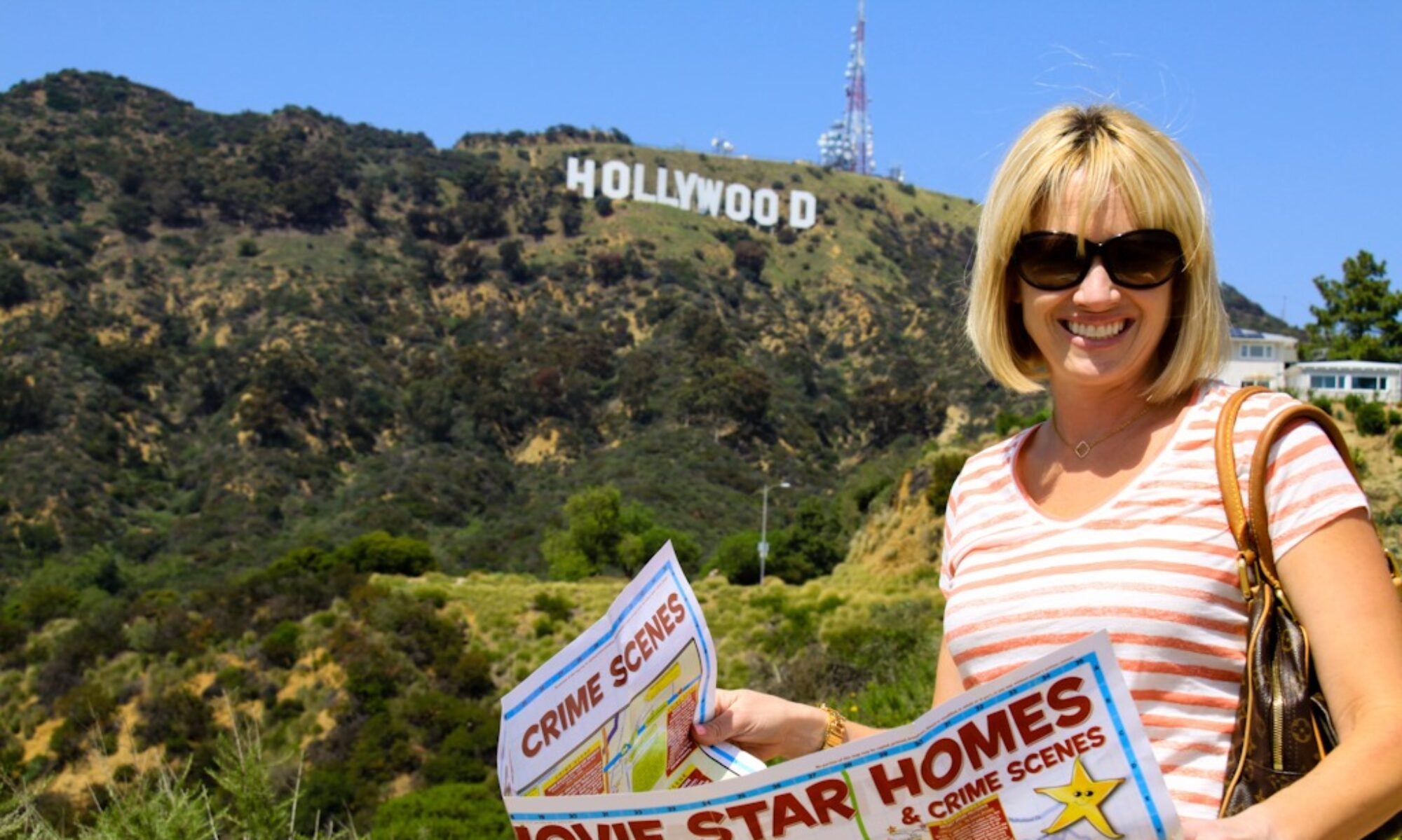While doing research on the Double Indemnity house, which I blogged about a couple of weeks ago, I came across some information about Villa Primavera – a courtyard-style apartment building that was featured in the 1950 film noir classic In a Lonely Place. I immediately became intrigued with the West-Hollywood-area building due to an anecdote that was listed on the movie’s IMDB trivia page. Apparently, In a Lonely Place director Nicholas Ray had lived at Villa Primavera upon first moving to Southern California in the 1940s and was so enamored with the place that he decided to build a replica of the entire complex, courtyard and all, on a soundstage at Columbia Studios (now Sunset-Gower Studios) in Hollywood to be used as Humphrey Bogart’s bachelor pad in the flick. At some point during the shoot, Nicholas walked in on his wife, Gloria Grahame, who also starred in the movie, in bed with his 13-year-old son from a previous marriage. Nicholas immediately moved out of the home he shared with Gloria and into the Villa Primavera apartment set, where he ended up living – in what was essentially an exact replica of his former apartment – until filming wrapped. Because the building was so inextricably linked with both In a Lonely Place and the behind-the-scenes turmoil that marked the shoot, I was absolutely dying to see the place in person and dragged the Grim Cheaper right on out to do just that a few days later.
Villa Primavera was constructed by legendary husband and wife architecture team Arthur and Nina Zwebell in 1923 and was the couple’s very first Spanish-Revival-style building. The charming complex features red-tile roofs, white adobe walls, and a central courtyard with a large tiled fountain, an outdoor fireplace, lush foliage, and wandering brick pathways. The individual apartment units boast corner fireplaces, exposed wood ceilings, and tile floors. The Zwebells loved the design so much that they eventually moved into the Hacienda-like property for a time and legend has it that James Dean and Katharine Hepburn also once called the place home. Sadly though, as you can see above, the ten-unit complex is gated and not much of it can be viewed from the street.
I did manage to catch a brief glimpse of the interior courtyard and central fountain through the front gate, though, and they both looked absolutely beautiful.
Amazingly enough, when the GC and I first arrived at Villa Primavera, this little guy ran up to greet us.
And I just about died when I realized that he was a polydactyl cat, aka a “Hemingway cat”, aka a cat with more than five toes on one or more of its paws! I had watched a television special on the unusual felines a little over ten years ago and have been absolutely obsessed with them ever since. I cannot tell you how incredibly fitting it was that we ran into a so-called “Hemingway cat” while visiting an apartment building with such a storied Old Hollywood history! Love it!
[ad]
In In a Lonely Place, Villa Primavera stood in for the supposed-Beverly-Hills-area “Beverly Patio” apartments where frustrated Hollywood screenwriter Dixon Steele (aka Humphrey Bogart) and his beautiful new neighbor, Laurel Gray (aka Gloria Grahame), lived.
The location was such an integral part of the murder mystery – which was fabulous by the way – that it led Roger Ebert to write in an August 13th, 2009 review, “The courtyard of the Hollywood building occupied by Humphrey Bogart in In a Lonely Place is one of the most evocative spaces I’ve seen in a movie. Small apartments are lined up around a Spanish-style courtyard with a fountain. Each flat is occupied by a single person. If you look across from your window, you can see into the life of your neighbor.” It is thanks to that interior view of neighboring units that Laurel is able to provide an alibi for Dixon after he is accused of murdering a young woman whom he had been seen with the night before. And while the courtyard area that is pictured above;
and the interior of both Dixon and Laurel’s individual apartments were recreations built at Columbia Studios, some actual filming did take place on location at Villa Primavera.
In the beginning of In a Lonely Place, Dixon returns home from the Beverly Hills police station after being questioned about the murdered woman and walks across the lawn of the real life apartment building. As you can see, a fake sign reading “Beverly Patio Apartments” was installed for that scene.
Until next time, Happy Stalking! ![]()
Stalk It: Villa Primavera, the In a Lonely Place apartment building, is located at 1300-1308 North Harper Avenue in West Hollywood.

















































